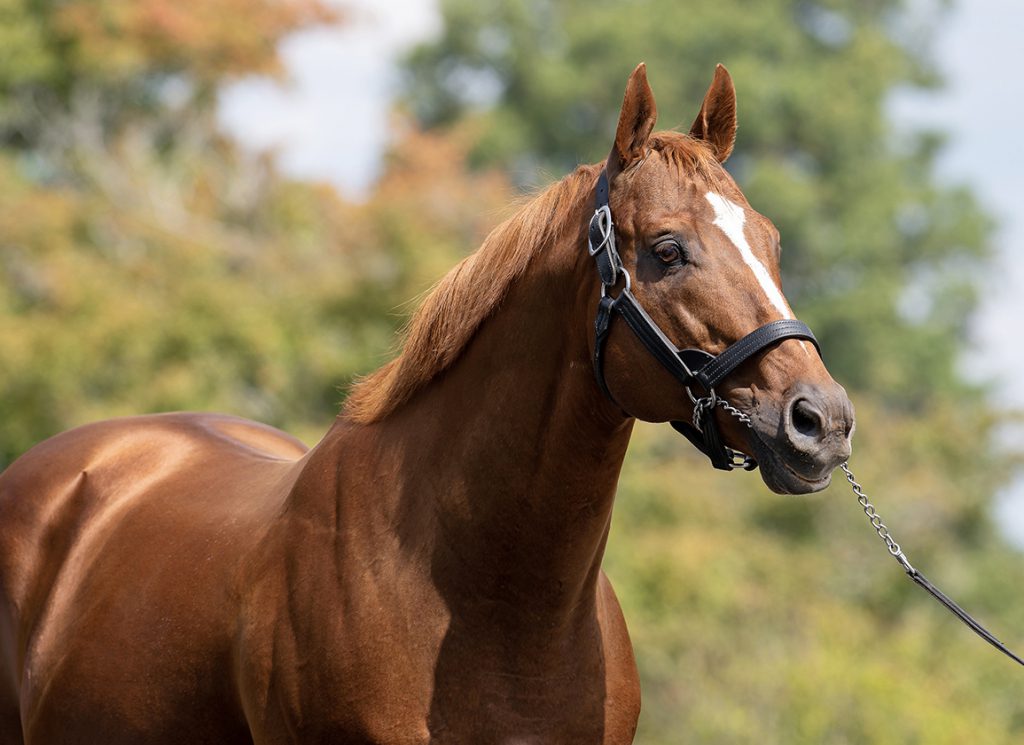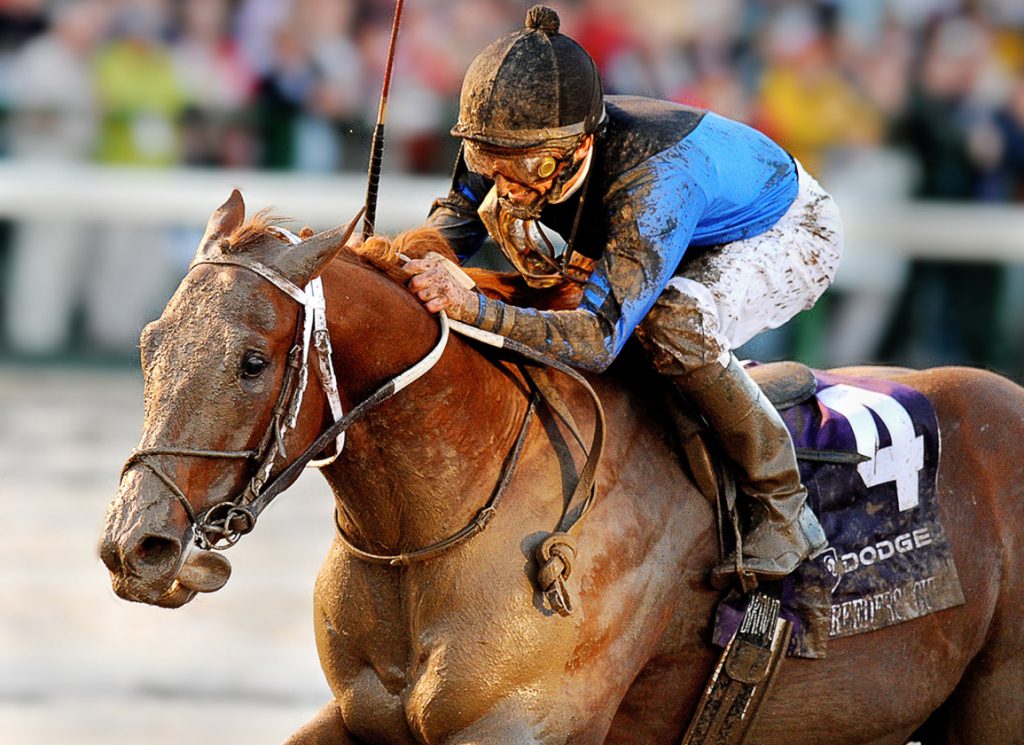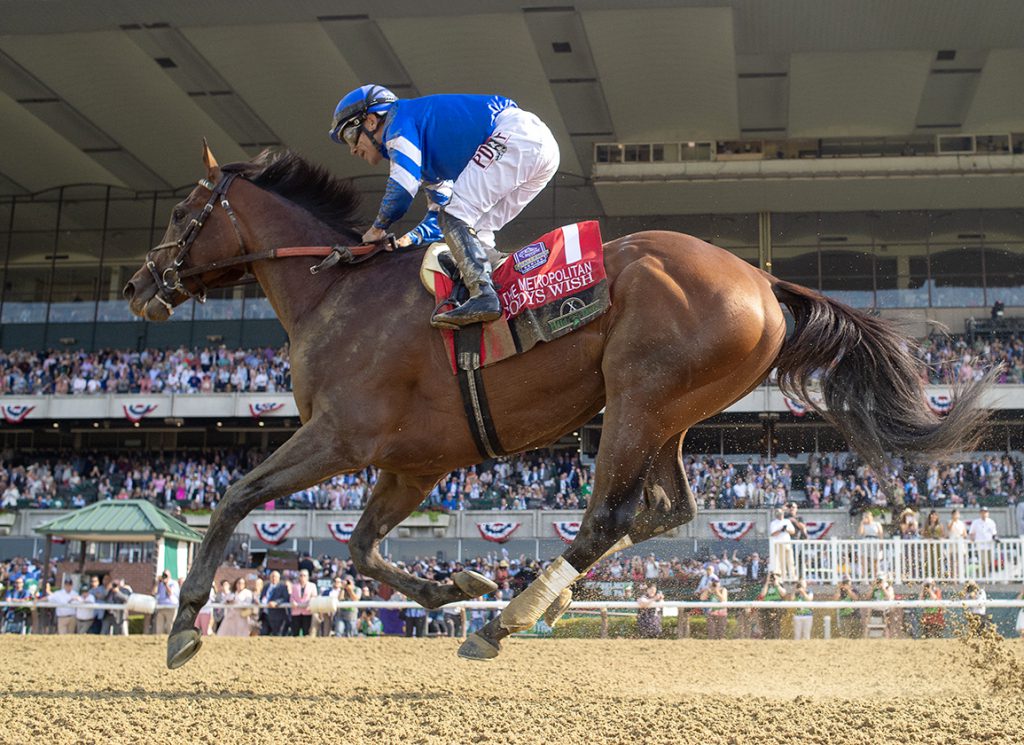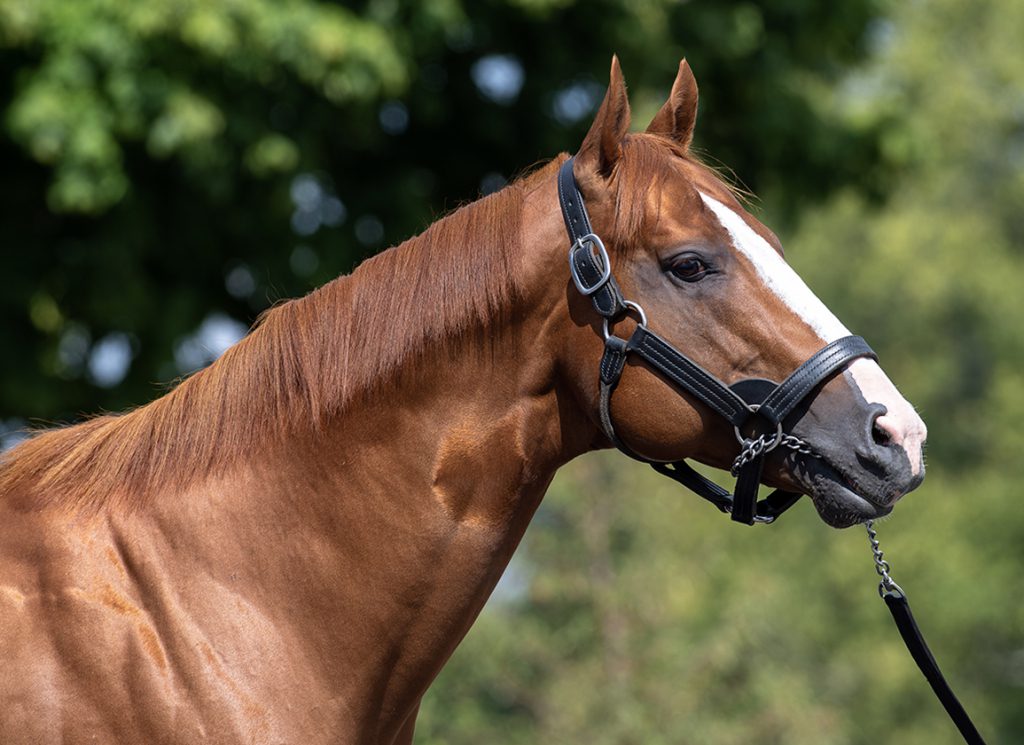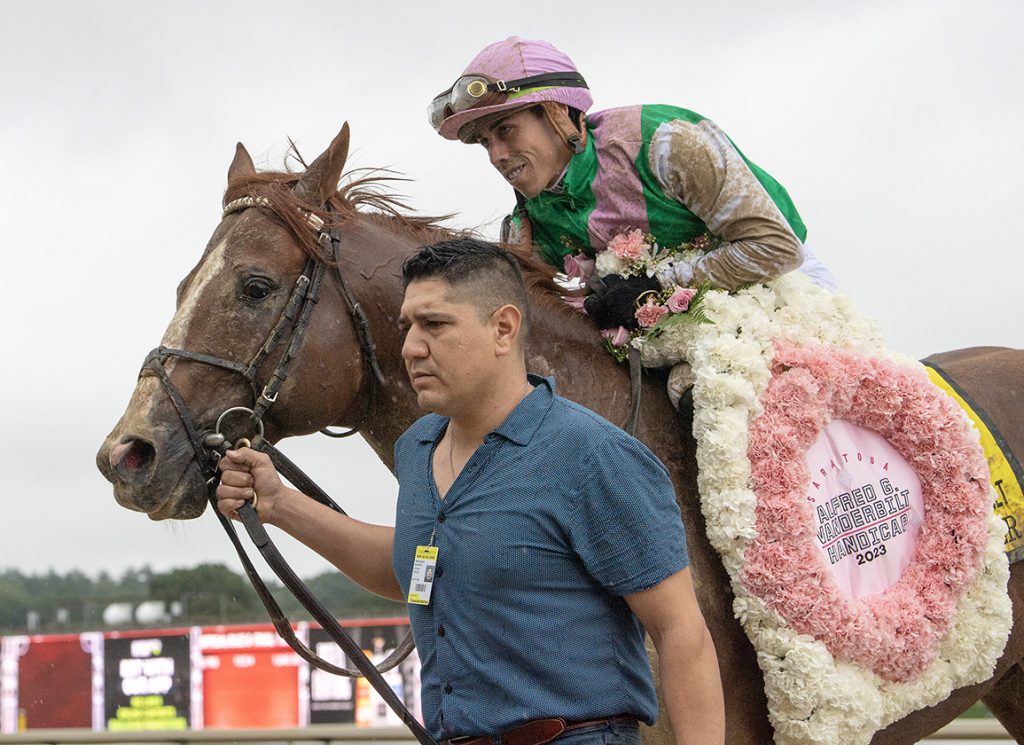At a time that so plainly demands leadership, where better to come than the desk of John Sikura? A man of notably independent outlook, the owner of Hill 'n' Dale can be relied upon for a perspective that combines candor and detachment with flair and imagination.
And those are all assets that appear to be in short supply right now. For while our community's emotional response to the traumas at Saratoga this summer was one of shared horror and grief, the polarization of opinion since has been emotive.
Much as we have seen in the political sphere, since the advent of social media, the sport's recent experiences appear to have stimulated increasing resentment and intransigence. On the one hand, some propose radical but relatively simple solutions; others, however, believe our problems are too varied to be tackled other than by diligent increments.
Sikura pleads for less panic, fewer polemics, and more circumspection, above all more coherence.
“The difficulty in every emotional event–be it gun control, abortion, be you liberal, labor, conservative–is that emotion and rational thinking tend to be polar opposites,” he says. “When you see a shocking event, you react with emotion. But there's never a simplistic answer to a complex problem.”
Sikura places the challenge in unflinching perspective. “The unfortunate incidence of catastrophic death in racehorses has remained relatively consistent for more than 20 years,” he notes. “And over the last four or five, we've had a steady decline. Difficult as it is to say in a public forum, unfortunately a horse race is a concussive, high velocity event where everything can happen. A mis-step. A bump turning you sideways at the wrong time. Jumping on heels. The dangers of entering, exiting the gate.”
Little wonder, he suggests, if forensic studies after breakdown clusters have tended-as at Churchill earlier this year-to find no single cause. In fairness, moreover, two dirt breakdowns during the Saratoga meet scarcely qualified as a “cluster.” For both to involve horses in the process of winning a Grade I, in front of the grandstand, was a coincidence that horribly exposed the sport. But Sikura feels that its freakish nature needs to be recognized before any single, sweeping solution is proposed or embraced.
“Not to sound callous, but I believe that if the Saratoga casualties [six others on turf] were 50 percent higher but it was Belterra Park, it would not be front page of the TDN,” he reasons. “You're wracked with emotion because of the connections, Grade I races, Saratoga, everybody's there.
“Ultimately you can never control what day this event happens, what race, what place on the racetrack, who's watching. But from the perspective of an insurance company, they would say, 'We don't know where or when, but some years we must expect clusters of these events.' The reason they will insure barrenness in mares, mortality in horses, all the possible events, is that there's a baseline. Same with insuring properties, hurricane, fire, etc. We may [at a given time] have a higher number of casualties due to cardiac arrest. And then everything gets to a norm, until or unless you can find a drug or a scientific breakthrough that changes everything.”
Sikura recognizes that none of this should discourage us from striving relentlessly to make the sport as safe as possible. The aspiration, naturally, should be zero fatalities. But he reminds us that we can never hope actually to hit zero, because with animals constructed this way there will always be an attrition rate-even per number of foals playing in a paddock. In the meantime, nobody should suggest to Sikura that either the problem or the solution can be simple.
“There are lots of factors that we can look into. Certainly, a study on the ideal racetrack. The ideal amount of cushion. Possibly a new kind of surface that is part artificial, part dirt. It could be that we come up with something that hasn't even been tried before, that is profoundly safer. And the highest level of scrutiny. Pre-scanning. A traveling team could go racetrack to racetrack, make sure that we're doing everything we can to have the surface ideal. I think that definitely we can, should and must do better.”
But even then, he predicts, from time to time something will go wrong. And it won't necessarily be anybody's fault. We will want to point to this or that reason, but many events-most, even-Sikura feels to be random. And, granted that our sport will always contain an element of danger, he finds another oversimplification in the familiar argument that only the humans participate voluntarily.
“You can say jockeys can verbalize their will,” he allows. “But really racehorses do the same, because they're innately bred to have that trait. They want to run, they want to compete, they want to perform much like a hound will chase a fox. We have breeds specifically bred for defining qualities, and I think it's extremist to say that if something goes wrong, it's cruel.”
He offers an example. You buy a German Shepherd puppy. But you read the science, and discover the breed to be susceptible to hip dysplasia.
“So you have the joy of the animal, the love of the animal, they're a family member, they can be a protector, many things,” Sikura says. “But when they turn 12, and they have hip dysplasia and can't get up, and everybody's crying, and you're taking your dog to the vet, is the breeder somehow immoral or inhumane for breeding that dog?”
Sikura sees that inborn sense of vocation in all Thoroughbreds, from the moment they wobble onto their feet. But here, presumably, his professional peers would find easy consensus. The differences arise from how we best deploy these instincts. And here is where the sport's governance exasperates Sikura.
“Who's in charge, who's funding, and how do you put it together?” he asks. “Our 'organizations' all have the opinion that certain things are under their purview and they should be in charge. If you have a conundrum that seems to have no solution, it's folly to get the same group of people to study the issue. It takes an independence where, real or perceived, you can't have prejudice. Where they won't say, 'Well, this will cost too much,' or 'What about the shareholders?' Just unbiased, well-paid professionals.”
But even if such people produced recommendations, who would decide on their adoption?
“We're a Rubik's Cube with one square taken out,” Sikura says. “So it can't be solved under our fragmented, disorganized, parochial, backyard mentality. If an outsider came in and took over the business, many of these organizations would be eliminated as either inefficient or redundant. The others would be governed in such a way that each had a specific task: public relations, humane treatment of racehorses, media source, sponsorship.”
Sikura has two axioms on power. “One, nobody voluntarily gives it up,” he says. “Two, you're never doing a bad job when you're in charge.”
The outsider just mentioned would look at the metrics and conclude that the sport, under the current dispensation, is diminishing. But who, Sikura asks, will sacrifice the narrow interests of their own sector to create the kind of rising tide that might eventually float all boats? As things stand, he complains, people will confine themselves to asking, “Did I improve handle at my meet?” or “What is the yearling average of my stallion?”
“You can't have direction without directions,” Sikura says. “Say someone has a bold idea. Say I did a paper and spent six months on it, and I can't wait to talk about it, I'm so excited. The biggest challenge would be who do I bring this to, and can they do anything about it? The answer would be, 'I don't know' and, 'No, they can't.' It's eternally frustrating. So there's innovative guys, billionaires, some of the brightest entrepreneurs in America-and therefore the world-that have contributed no intellect, no ideas, no participation because they felt frustrated.”
Any major change has duly had to overcome fierce factional opposition: the Breeders' Cup, now HISA. Even the Breeders' Cup, perceived as a triumph, is not what Sikura feels it might be: its purses stagnant, international engagement extremely uneven. And then there's the showpiece itself, the Kentucky Derby.
“The single event that drives the commerce of the industry,” he declares. “The point of entry to virtually everybody that owns a horse: 'I want to win the Kentucky Derby.' If you're fortunate enough to do so, there should be a financial reward that recognizes that-not just pride in achievement.
“A purse of $3 million, with $1 million dollars in fees and nominations, is an embarrassment to the sport. A huge windfall is given to a corporate entity, which they're entitled to. Corporately, they've been brilliant stewards of their brand and stock value. But they have to recognize that they're in a sport that has many participants-and that those should be rewarded.
“In the NFL, players are paid to measure with their ability. There's revenue-sharing. Things are done recognizing that the league has to prosper and succeed. The best teams can have high ticket prices, etc., but everybody needs to be a part of it. Yet participants in our industry, the people that provide the product, put on the show, are effectively minimum wage workers. The money is here from the historical racing. Instantly, the Derby can be $5 million; the Oaks $2.5 million. Instantly. Should be $10 million and $5 million. And it doesn't even have to come out of their pocket. It's a redistribution of KTDF funds, the money's there.”
He invokes the example of Ron Winchell at Kentucky Downs.
“Look at what they give away!” he exclaims. “They give millions of dollars to other tracks. They can't count the money. People don't think that purses are a huge part of this, everyone talks about the pageantry and the mornings and how great it all is. I don't diminish any of that. But when nobody would race at Turfway Park or Ellis Park, and now you can't get in, is it a mystery why?”
Those tracks, of course, are under the same ownership as Churchill Downs.
“Again, I'm not critiquing the way they run their business as a 'business',” Sikura stresses. “But they've made a lot of money off the horseracing industry. Hollywood Park, shut down and sold. Arlington, shut down and sold. Calder. So I think they have a responsibility and their bottom line, it's nothing. Nothing. It's like leaving a nickel tip. Not even. A penny falls out of your pocket, you're in a hurry, you just leave it there.”
And if it's human nature never to surrender more than necessary, Sikura feels that the case for doing so will never even be made by so fractured a sport.
“I think an open-minded evaluation by the other side would have to agree with you,” he says. “But we have this perfect conundrum of no rules, no uniformity-the fragmentation that is always great for an opponent. In fact, the game never takes place, because one side is too disorganized even to schedule a date.”
Characteristically, Sikura's freethinking, freewheeling mind has taken us far from our opening challenge. But that's precisely because the moral interdependence of the sport's many dimensions is not matched in its structure.
“We only consider these things when there's a crisis,” he says. “But for me, the big crisis is a shrinking of the industry. And there are so many positives: healthy markets that now offer great purses, attendance, excitement. We have to find an equitable way to support places that aren't going as well. Like California. They're one racetrack closure away from being out of business. Socially, horseracing would either be neutrally or negatively interpreted by the majority of people there. You have Golden Gate being sold. You have small fields. You have land that's worth a tremendous amount of money. So what can we do, as an industry?”
The Kentucky scene is thriving, but that took work, campaigns, legislation. “It's a great example of how you can make things happen, with determination and especially unity,” Sikura adds. “But again, if all you're concerned about is what's happening to you, today, California doesn't even enter your mind. It should.”
As it is, California is in a vicious circle: fields drop, handle drops, purses drop, shippers drop, fields drop further. So Sikura asks whether we could we trim, say, $3 million from Kentucky purses-so that maidens were $105,000 rather than $120,000-and put that into Californian graded stakes? Would that prompt a Californian investor to buy a yearling? Who knows? But what we do know is that only he is asking.
In time, he predicts, all Grade I races will be slots-funded. But he feels that the sport would be drastically eroded without sturdy coast-to-coast bookends in New York and California. By now, admittedly, past mistakes in California can't be repaired. “I don't know where everybody was when these bills were being passed, but here we are,” Sikura says with a shrug. “Without some Indian participation, racing's going to have to survive being racing. And a lot of people would say, 'Well, that's the way it should be.'”
So could Horse Racing LLC, non-profit, buy Californian tracks?
“It's a free country,” Sikura replies. “Whether you could do that on terms at which you could operate racing and fund the debt, I wouldn't know. I think Golden Gate is a pretty strong message on the economics: that the return on investment needs to be better. Without saying it in words, that action tells me that Santa Anita is the next consideration. Somebody offers $1.2 billion? I believe that deal would get done. Is there a way to develop the property, keep racing? Smarter people than me would have to evaluate that. But you can't just have a patient on life support. You need a quality of life. So you need racing to thrive.”
And, by a bitter irony that brings things full circle, it is actually California that has shown the rest of the industry the way in terms of breakdowns. Not so long ago, those now announcing domesday were doing just the same at Santa Anita. But backstretch resistance to new protocols was overcome and Santa Anita and Del Mar, without waving some magic wand, have achieved exemplary outcomes at astonishing speed. Arguably the rest of the industry has not adequately acknowledged a debt of gratitude for this, and will only do so if more people start to think along the same lines as Sikura.
“We don't want our money transported,” he says. “But then if you thought about it long and hard, that money, was it really ours? No, it's people pulling a handle.
“Everybody is just here to reap as much as they can. If you operate a nursing home, you could make the sheets thinner: there's higher profit. But you look at the racetrack environment. You have animals, you have people living on the backside, you have van drivers, you have a lot of good people that are part of it. I think they all have to be recognized. It's not just about the head guy: how much he can eat, and what he has left over, he throws in the garbage. It might sound like I'm half-crazy. But I think that mentality flows down to everything, in every business.”
Well, if this is what it sounds like to be half-crazy, then that can't be because the rest of us are sane. If anything, in fact, “half-crazy” might well represent major progress on where we are right now.

The post Sikura: No Simple Solutions for a Fractured Sport appeared first on TDN | Thoroughbred Daily News | Horse Racing News, Results and Video | Thoroughbred Breeding and Auctions.
Source of original post
